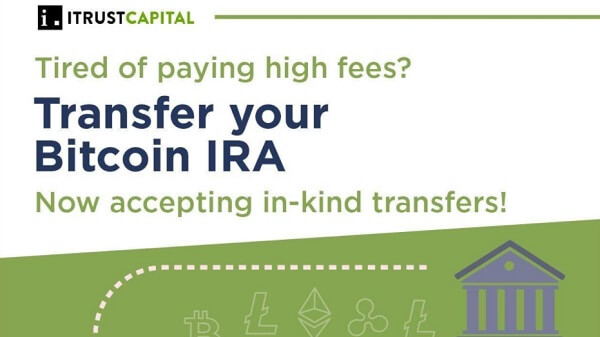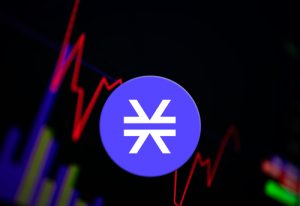Blockchain Thrived in Lockdown —What Happens When Life Re-Opens?

Right now, India and Brazil are grappling with the peak of their COVID-19 crisis. Meanwhile, nations such as the United States and European Union are reopening their economies. In the height of lockdown, no matter where in the world, reliance on technology has never been higher.
The use of Zoom, Twitter, Reddit, and TikTok have soared and connected us. The impact of COVID-19 lockdowns is usually measured economically. However, looking to the technological innovation taking place provides a different view.
The correlation between digitized communication, e-commerce, and the unparalleled uptake in cryptocurrency and blockchain is no coincidence.
Lockdowns have necessitated such an exchange of information and ideas that blockchain’s adoption has been fast-tracked.
Although so much of the world is rolling out vaccines and promising to leave lockdown for the last time in the coming months, the lasting transformation of large scale global industries and the financial sector are inevitable.
Digital asset adoption is soaring
When Elon Musk changed his Twitter bio to ‘#bitcoin’, the price of BTC rose nearly 20% in a matter of hours.
Celebrities and mainstream news sources had already begun to note as bitcoin’s entered an impressive bull run. As lockdowns begin to loosen, digital assets will form a central part of the financial world.
Already, many of the largest institutional investors, including JP Morgan, have placed long term bets on the future of bitcoin. As a result, digital currency is now a part of the diverse portfolio strategies of industry experts.
Stablecoins are another kind of digital token that are pegged to a real-world asset such as a commodity or fiat currency. They have also seen enormous growth in lockdown. Thanks to their peg, stablecoins possess relatively low price volatility and integrate with established financial institutions.
Countries like the UK, which has recently set up a Central Bank Digital Currency (CBDC) task force, are likely to authorise stablecoins as they exit lockdown to bolster the global digital economy.
As digital counterparts to national currencies become more common and international travel opens up, stablecoins will become the new medium for currency exchange.
Crypto and blockchain improve access to wealth
Government-launched digital tokens became a hot topic in lockdowns due to systemic failures of centralized financial methods.
The U.S. is a prime example of delays in getting vital stimulus to citizens. It was held back by slow centralized technology and archaic methods of delivery. The cumbersome institutional mechanics within the U.S. look particularly archaic next to countries like Bermuda.
The Government of Bermuda launched a pilot program for a digital economic stimulus token to get much-needed funds to their citizens quickly. As a result, everyday consumers now have the proof they need. Therefore, transaction wait times, system delays, and shut-down periods can be a thing of the past.
Significantly, loans on blockchain-based peer-to-peer lending platforms have risen more than seven-fold since March 2020 to $3.7 billion. Again, this is driven by the failures in the centralized financial model.
In an attempt to prop up the global economy struggling as a result of COVID-19, central banks kept interest rates suppressed at historical lows. Thereby steering investments towards alternative finance, such as peer-to-peer lending.
Low interest rates highlight the centralized control that so many have become aware of and opposed to through online conversations fueled by lockdowns.
Soon, the financial infrastructure that by its nature marginalises many will be replaced by decentralized finance (DeFi) enabled smart contracts, decentralized governance, automated market makers and decentralized exchanges.
The rise of stablecoins fits nicely into this paradigm shift. This means that DeFi is likely to continue its upward trajectory until centralized finance (CeFi) is but a pre-lockdown memory.
The tokenization boom
Tokenization has proven its capacity to be a more equitable method of accessing valuable assets.
In particular, Non-Fungible Tokens (NFTs), or digital tokens representing tangible assets on the blockchain, have exploded in popularity. NFTs advancements were so fast that no one seemed to know what they were.
Headline after headline offered NFT explainers for the public. Meanwhile, people could not wrap their heads around the likes of Beeple’s $60 million art sale.
Effectively, NFTs democratise digital trading and purchasing. They make assets that were previously only available to a minimal number of accredited investors available to many.
In addition, the online conversations around NFTs fueled further interest. They spawned larger investments and uptake, accelerating the mass adoption of blockchain technology.
Now, following their society-wide, head-turning introduction, NFTs are ready for mass integration into many facets of gaming, art, real-estate, and beyond.
Anything that cannot be digitized directly will be represented as an NFT. This opens many assets to new global trade and exchange opportunities.
This revolutionary step towards global asset trading will also penetrate financial markets. Thus, leaving no stone unturned as we are catapulted out of lockdowns towards a new era of accessible asset ownership.
Putting healthcare on the blockchain
While crypto adoption and investment expanded in the past year during national lockdowns, so too did the adoption of blockchain technology to improve our COVID-19 response.
There has been severe disruption to medical supply chains. The pandemic shed light on the astounding lack of verifiable, real-time data in global healthcare supply chains. Decentralized technologies came to the forefront in the effort to correct these failures.
For example, MiPasa and IBM partnered to launch a data-sharing network for COVID-19 analytics. In addition, Hedera Hashgraph has been leveraged for COVID-19 tracing and testing in Arizona State University. This allowed near-instant updates to health records. It is also used by UK hospitals to track COVID-19 vaccine storage.
Now that these weaknesses have been exposed in traditional healthcare systems, there is an incredibly strong likelihood that governments and major enterprises will continue to leverage blockchain technology.
According to a 2020 TechSci Research report, increasing data breaches in the global healthcare industry will see blockchain use grow by 70%.
Decentralization brings trusted, verifiable, and immutable data sets, global access to healthcare records, and real-time ledger updates.
A different world
With blockchain companies aiding the national vaccination processes, NFTs becoming a commonplace investment option, and governments shifting their efforts to create CBDCs, it seems the post-COVID-19 world may be unrecognizable.
The online conversations fueled scrutiny of our financial models, called for decentralized governance, and prompted NFT investment to act as a major catalyst for this change.
Our collective frustrations at how things were, coupled with the transferability of ideas through the internet and across the globe, have fueled a new age of tech and finance. All of which are facilitated through blockchain technology.
Disclaimer
All the information contained on our website is published in good faith and for general information purposes only. Any action the reader takes upon the information found on our website is strictly at their own risk.















